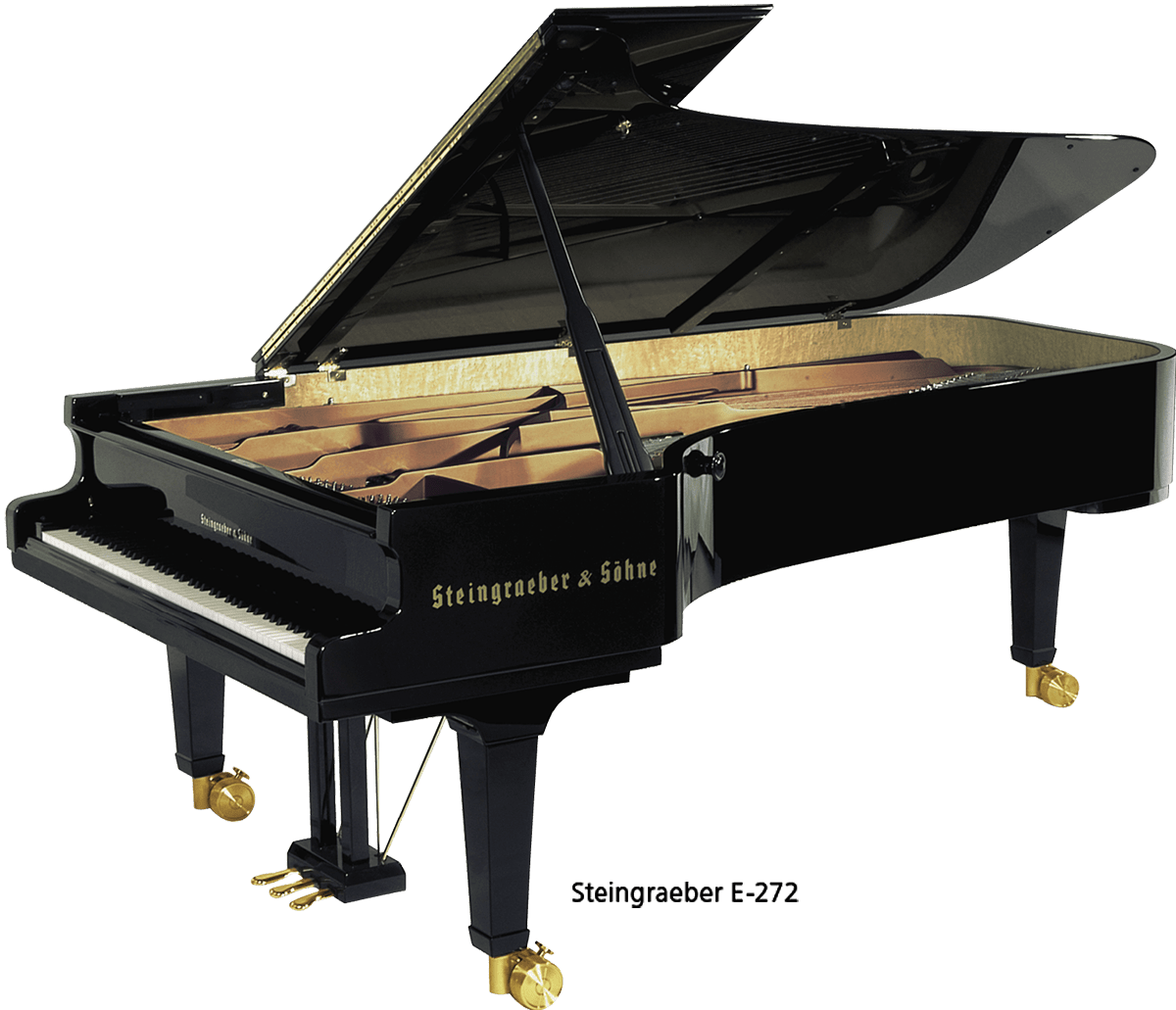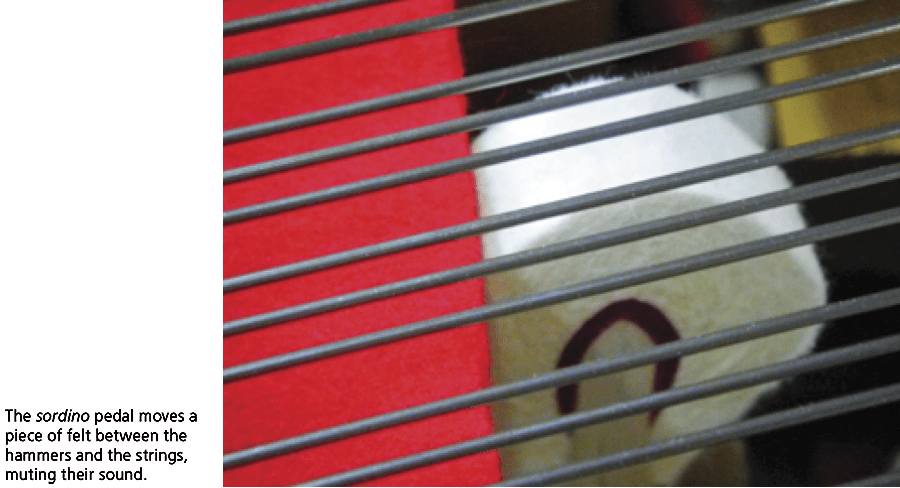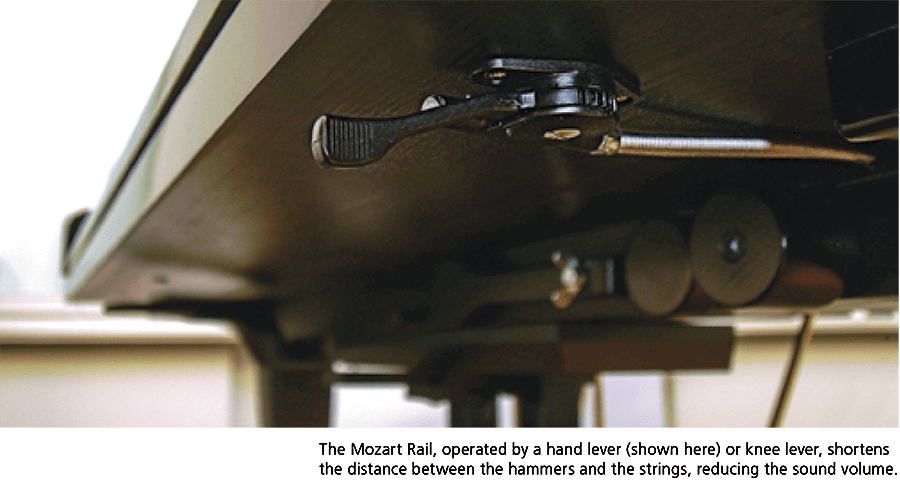What struck me was the remarkable individuality of each instrument, and the astonishing variety of their designs and functions. Knee levers to control dampers! A piano with a Janissary stop, with which you could activate the sounds of drum and cymbal to emulate Turkish military music — the perfect accompaniment for Mozart’s Rondo alla Turca!
One piano in particular captivated my attention — if memory serves me right, a Pleyel with five pedals. Early pianos typically had at least one pedal, for the dampers, to control how long the strings vibrate after being struck by the hammers; and a second pedal, to soften or mute the strings. (Later pianos would add a third pedal, the sostenuto, to selectively sustain notes played by held-down keys while leaving the other strings unaffected.) But why in the world would a pianist need five pedals?
The pedal on the far right was the standard damper pedal. To its immediate left was a type of soft pedal that gently muted the strings by applying to them some sort of soft material. But then the center pedal was another soft pedal, and it made the sound even softer. The remaining two pedals added even more levels of muting, to the point where the fifth pedal made the piano whisper like gossamer wings, barely audible unless you were in the instrument’s immediate vicinity. I was told by the curator that this piano model was one of Schubert’s favorites, and that while he was too poor to own one himself, he lived next to a Pleyel showroom, and would visit often to play those magnificent pianos with the incredible soft pedals — which I later learned were called sordino, or mute, pedals. Suddenly, Schubert’s music made perfect sense: the delicate runs in his Impromptus become more magical when you can apply additional levels of softness and ethereal coloring, effects simply unattainable on our modern pianos, which are designed to fill large concert halls with acoustic power, not intimate spaces for musical introspection.

Skipping forward in time, recently I had the opportunity to experience my first Steingraeber & Söhne piano, on display at the 2017 trade show of the National Association of Music Merchants (NAMM): a model E-272 concert grand with some remarkable features reminiscent of that 200-year-old Pleyel. Steingraeber & Söhne pianos are handcrafted in small quantities in Bayreuth, a picturesque town on the Red Main river, in Bavaria, Germany, 145 miles north of Munich, and the home of the annual Wagner Festival. In business since 1852, the company is currently owned and operated by members of the sixth and seventh generations of the Steingraeber family, two of whom were present at NAMM.
As a concert grand piano, the E-272 is a magnificent instrument, capable of thunderous power while maintaining clarity of tone and color throughout the range of the keyboard. Steingraeber & Söhne pianos adopt the European sound palette, in which the purity of sound is never overwhelmed by muddiness, particularly in the bass. The keyboard touch on this instrument was wonderfully responsive and balanced, capable of the widest expression of coloration. The E-272 held its own in comparison to the finest concert grands I have played, and that in itself is worthy of merit.

But then there were those remarkable features, which reminded me of the spirit of innovation and creativity I’d experienced at Hatchlands two decades before. The first of these is the sordino, which can be operated either by a knee lever or, when activated by a hand lever, as an alternative function for the middle pedal. The sordino pedal moves a piece of felt between the hammers and the strings, to significantly mute their sound. This makes possible a degree of Schubertian delicacy in touch and tone very similar to the Pleyel sordino I experienced. (Interestingly, Schubert himself indicates his desire for this level of muting with the marking fp in his scores.) The effect is marvelous, but it should be noted that it applies to the notes only as they are being struck — the sound cannot be modified after the note is sounded. Perhaps in a future version, some way could be found to apply a damping material to the strings after they vibrate, to create a unique, muted aftersound for more striking effects of sforzando (a sudden accent or increase in sound) or subito (a sudden decrease in volume).

The second of the Steingraeber’s innovative features is the Mozart Rail — a device, operated by a hand lever or knee lever, that varies the distance between the hammers and the strings. Using this rail can shorten the hammers’ travel distance from the normal 47 mm to as little as 36 mm, and the vertical travel distance of the keys (the key dip) from a normal ~10 mm to just 8 mm. The result is a significant reduction in the output of sound. At first, I didn’t see the need for such an accessory, but then it struck me: It would be perfect for collaborative piano work. Lowering a concert grand’s lid to the half-stick position reduces the volume by only so much, and closing the lid entirely sacrifices tonal clarity. Applying the Mozart Rail could be a wonderful solution to problems of balance in accompanying solo instruments, and in other chamber music settings.
The third feature of the Steingraeber worth noting was the lid itself. If you’ve ever had to hoist the lid of a 9’ concert grand, you know that you need a good bit of muscle to get that beast up — and heaven help you if, like me, you’re short. But thanks to an innovative use of honeycombed aircraft materials sandwiched between thin wooden veneers, all Steingraeber & Söhne grands, including the E-272, now have the world’s lightest grand-piano lids — about half the weight of typical lids made of medium-density fiberboard (MDF). At NAMM, we were in an acoustically dead booth at the Anaheim Convention Center, so there was no way I could test Steingraeber’s claim that the new material increases the lid’s ability to vibrate and project sound farther — but it was certainly much easier to lift and lower.
It’s refreshing to see that the spirit of innovation is still alive and well within the piano industry. Although Steingraeber & Söhne’s sordino pedal and Mozart Rail are essentially refinements of mechanisms that have long been used in upright pianos (the sordino is a rough equivalent of an upright’s practice pedal, and the Mozart Rail mimics the soft-pedal function found in some old uprights), it’s a pleasure to have additional expressive options available in a large concert grand. It’s also gratifying to see technical innovation in the direction of softer sonorities, rather than always toward the louder and more powerful. The further exploration of quiet spaces made possible by such innovations may itself be a wonderful artistic antidote to the noise and bustle of our modern lives.
The sordino feature is optionally available on Steingraeber & Söhne models C-212 (7'), D-232 (7' 7"), and E-272 (8' 11"), and adds from $10,000 to $15,000 to the piano’s price, depending on the configuration chosen. The Mozart Rail, available as an option on any Steingraeber grand, adds $8,000 to $12,000 to the price, depending on the configuration chosen.